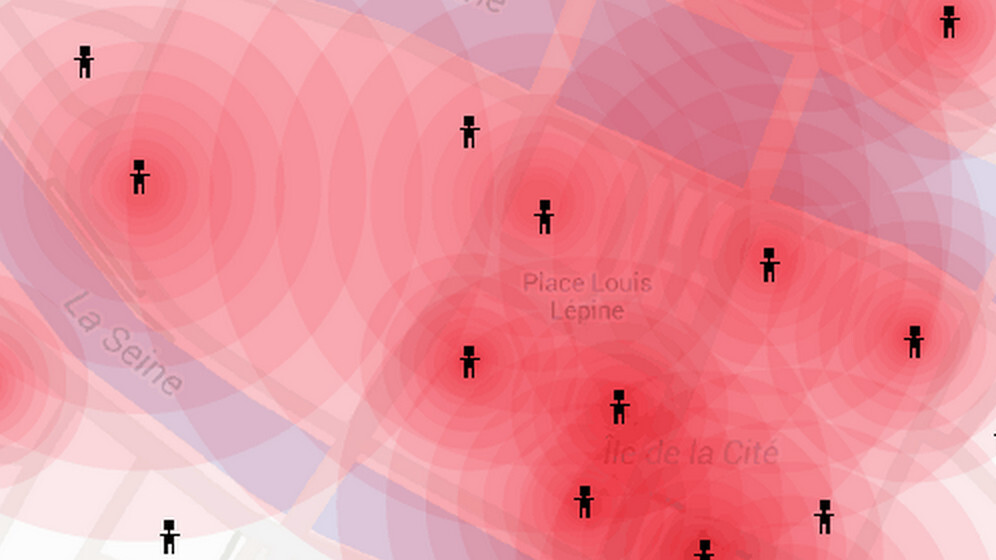
Over the weekend I spent a bit of time with Plague, an app that our own Owen Williams recently described as a gamified version of Reddit, and I’m sure the developers have hit on something noteworthy here. It looks like others agree, as its user base is growing rapidly.
Despite only a small amount of press coverage, Plague, which comes from a Lithuanian startup, is growing as virally as its unusual name would suggest.
Deep Sea Marketing, which has previously developed a messaging app called Hipe and a photo-sharing app called We Heart Pics, tells us that Plague has acquired 50,000 users in three weeks, apparently growing now at a rate of 20 percent per day. I can believe it, too. I’m jaded by new social apps these days, and yet I’ve spent a considerable amount of time over the past few days using Plague.

Plague is all about spreading information virally. You prepare a post – some text, an image, a video or a link – and then publish it. It’s immediately sent to a number of other users (the precise number depends on your ‘infection index’ – more on that below). They receive your post as part of a card stack of posts currently being shared by other users on the network. If they want to share your post on, they swipe up, and it’s spread to more people, if they swipe down they don’t share it and help stop your message from going further.
Thus, popular content spreads virally throughout the network. There’s no ‘friending’ or ‘following’; as soon as you start using Plague you can potentially receive messages from any other user. To keep things fresh, messages expire after seven days.

How one of my messages has spread so far, including an ‘infection map.’
So, Plague is based on a relatively simple idea, but it’s very sticky – Deep Sea says that the average session length is 1-3 minutes, while 5.7 percent of users have clocked up sessions in excess of 30 minutes. We’re told that the median session frequency is 5.6 sessions per day, while around 20 percent of users have at least 10 sessions per day and 9 percent of that group go as far as passing 20 sessions per day.

Tinder unlocked the addictive power of swiping to decide between two things, and ‘Tinder for X’ apps have been a big theme this year, but Plague is more than just that – it’s all about the joy of sharing.
Swiping up and down to decide whether or not to share posts takes all the friction out of aggregation. You’re never sure what kind of content you’ll get next, but that makes it strangely addictive. It could be some image stolen from 9gag (I swipe down to stop those spreading as I’m a killjoy) or a brilliant photograph, joke or comment on the world (I swipe up to share many of them on). Even if you don’t post anything yourself at all, there’s real joy in sharing, and isn’t that nice?
It’s self-policing, too. Plague will become exactly what its users want it to be because popular content is spread onwards, and unpopular content is stopped in its tracks. Each user’s ‘infection index’ means that they can spread posts more widely if content they’ve previously shared has been popular. It’s ranked curation that will help shape the flavor of what Plague is, over time.
Flaws
That isn’t to say Plague is perfect. Its design means that false information could spread widely without being checked. ‘What’s the harm,’ you might think, ‘in spreading on this juicy tidbit even if I’m not sure it’s true? One swipe can’t hurt, and it’s so much effort to fact-check it.’ And as the lie spreads more widely, its growing popularity makes it seem more likely to be true.
We’ve seen this problem with false rumors spread via anonymous apps like Secret, but at least the ‘self-policing’ aspect to Plague means that there are opportunities for a lie to be stopped in its tracks by more responsible users.

Interesting stories… but are they true? I declined to share these further as I didn’t have time to check them. It would have been really easy to just share them anyway.
Then there’s the fact that building a business around Plague may be difficult if it can’t attract brands and media companies. The fact that you don’t know who your message will spread to first makes building an audience difficult – hit only a bunch of people who don’t care, and your carefully crafted social content was for naught. And each post has its own audience – you can’t be sure people who see any particular post will love it or hate it – it all depends on the whim of those first few recipients as to whether they amplify it or not.
How does Plague choose who to send your post to? Deep Sea tells us “We have really complex algorithm under the hood and a lot of factors involved. We don’t want to keep users waiting for the new cards too long and we don’t want the cards spread too slow.”

Listicles don’t fly on Plague, or at least this one didn’t.
If the ability to follow accounts was added to Plague it may help brands and news organizations, but it may also risk breaking what’s unique about Plague in the first place. Still, the viral nature of the app makes it certainly worth experimenting with.
It’s early days, and despite Plague’s flaws, I’m keen to see how it develops in 2015… and, if it continues to grow quickly, how long it takes for Facebook to launch an experimental app ‘inspired’ by it.
Don’t miss: 65 of the best iOS apps launched in 2014
Get the TNW newsletter
Get the most important tech news in your inbox each week.




